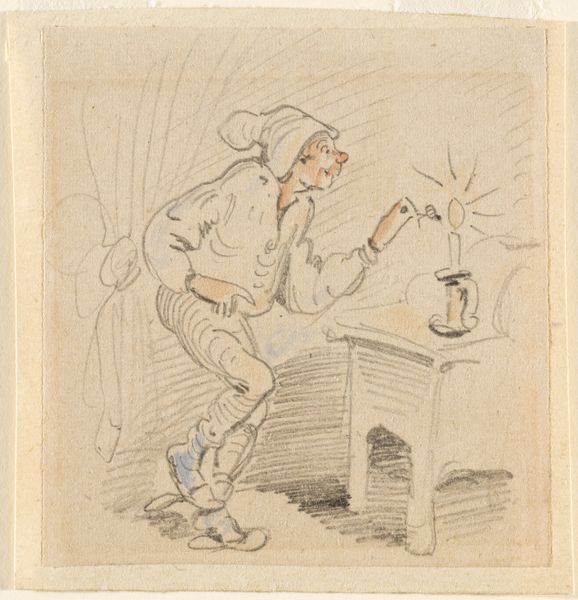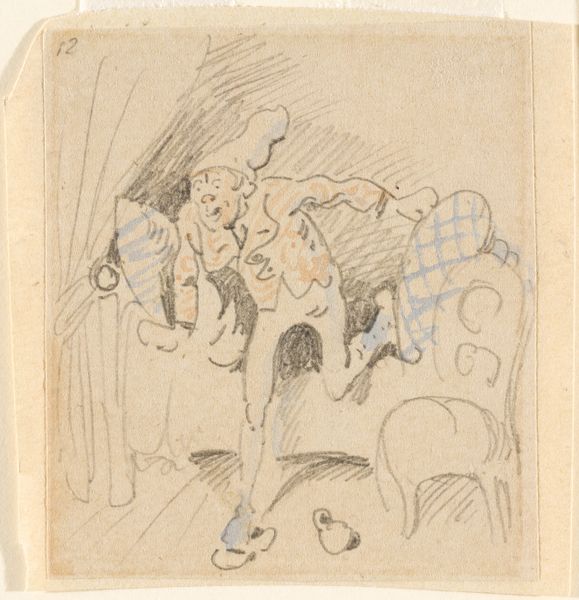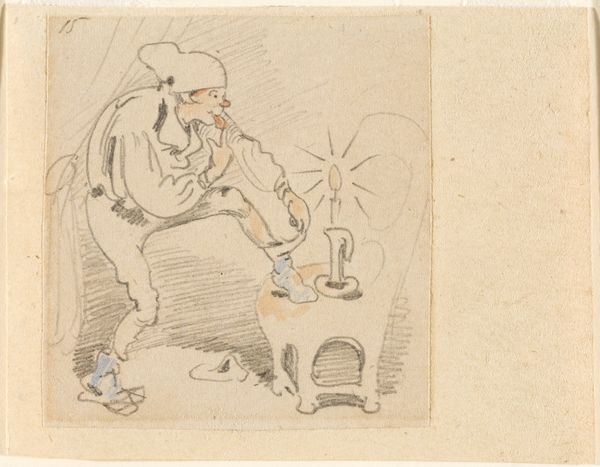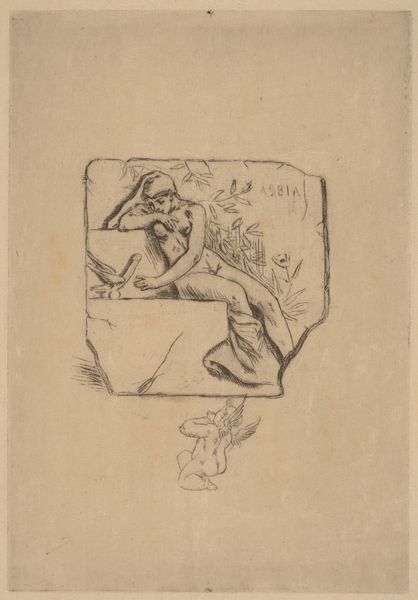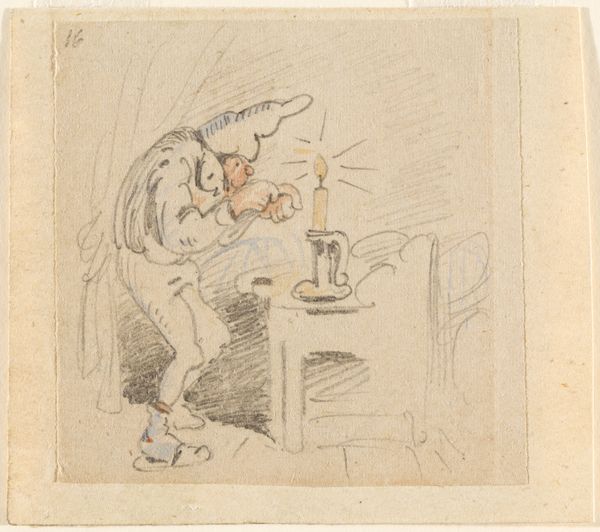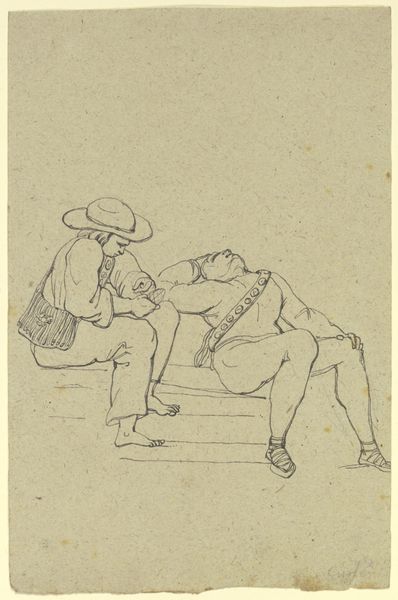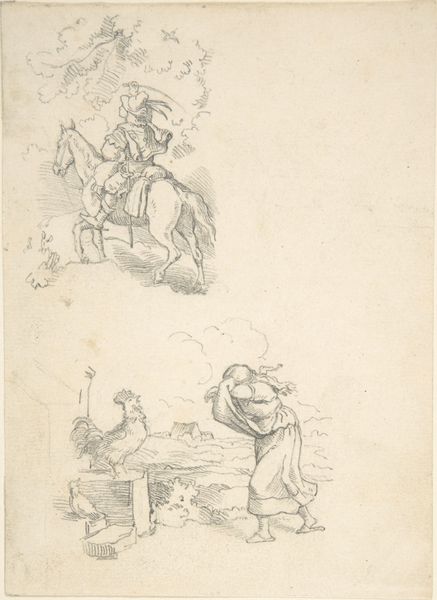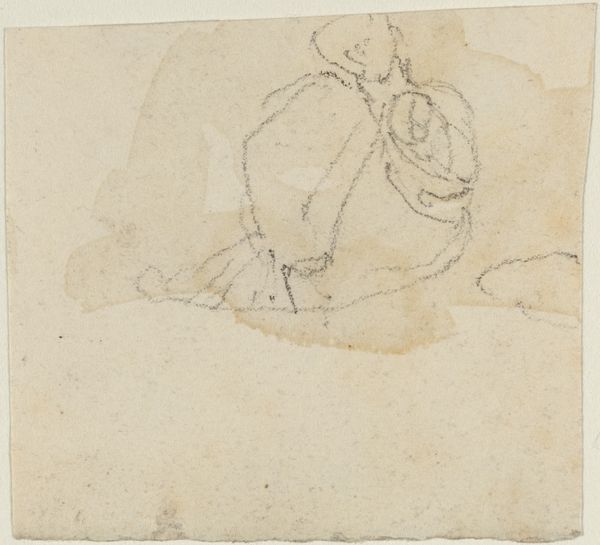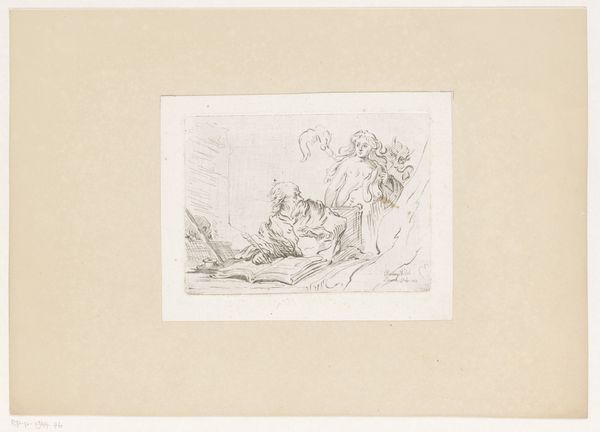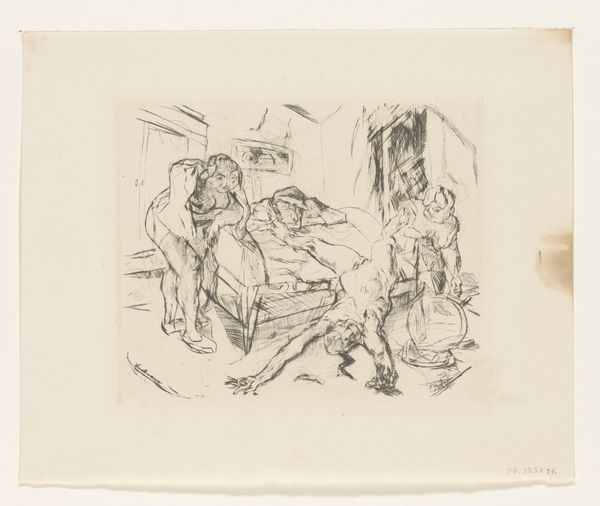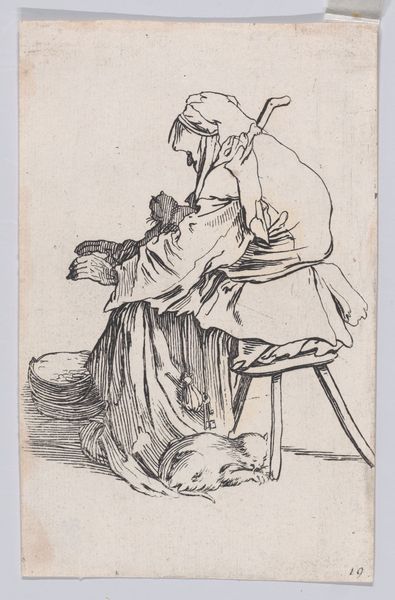
Die gestörte, aber glücklich wieder errungene Nachtruhe (Der Floh); 14 1862
0:00
0:00
Copyright: Public Domain
Curator: Oh, this drawing is wonderfully peculiar! We're looking at Wilhelm Busch's "Die gestörte, aber glücklich wieder errungene Nachtruhe (Der Floh); 14," or "The Disturbed but Happily Regained Night's Rest (The Flea); 14" created around 1862. It resides here at the Städel Museum. Editor: The initial feeling is rather… agitated. The lines are scratchy, frenetic almost, like the artist was trying to capture a fleeting moment, or a disturbing dream. The tonal values are minimal, heightening that sense of rawness. Curator: It's a fascinating glimpse into the world of the mid-19th century. Consider the iconography. Here we have a man, clearly of a lower social class by his attire. He's contorting his body to examine his foot, perhaps the very site of the intrusive flea. This speaks to the anxieties, quite literally under their skin, about hygiene and class divisions during that period. Editor: Semiotically, even the color choices contribute to the reading of anxiety. The slight use of tan or ochre amidst the primarily grey or black linework seems to amplify the unease. Curator: And the flea itself, though unseen, takes on a symbolic weight. It’s a tiny aggressor disrupting not only his sleep but perhaps also his sense of self, and status. Nighttime was believed to release unconscious and disruptive spirits that played on waking anxieties. It also reminds me of popular folklore associated with animals and mischief in medieval society. Editor: Yes! Also, there is a formal imbalance that communicates discomfort. Notice the high-backed chair pushed so abruptly to the right; this compositional device emphasizes the isolation of the figure, trapped in his immediate predicament. Curator: His work served as satire, too, on the more polished or sanctified historical genres popular then. In effect, it lampoons tradition with its seemingly low subject and loose sketch-like quality. Busch captured lived, messy realities in the world. Editor: I agree; my eye now detects a deliberate tension between the fine detail in the figure's face and clothing and the broad, sketchy handling of the background elements. The texture itself communicates instability. Curator: Exploring this sketch reveals a time when hygiene and societal strata converged. It reflects the collective anxieties around comfort and safety in everyday spaces. Editor: Yes, it's precisely this imbalance and agitation that draws us into Busch’s creation and exposes deeper undercurrents of experience in the work.
Comments
No comments
Be the first to comment and join the conversation on the ultimate creative platform.
